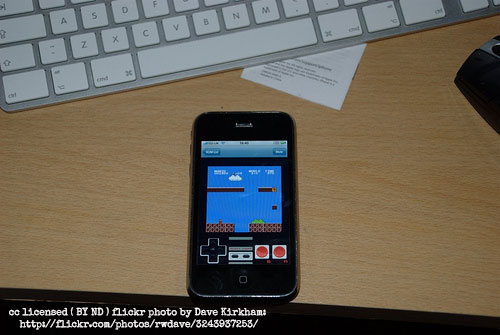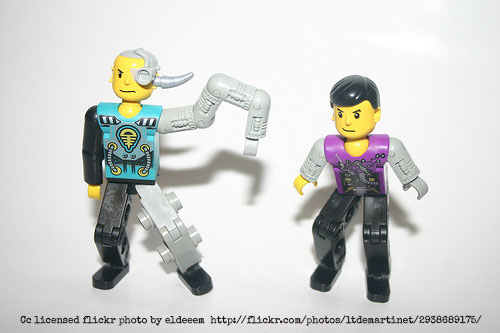How do you go about planning and implementing your ideas for school?
I’ve been thinking about the teaching projects I have ahead of me this year. A Year 10 elective class that carries on from 2013; a Year 7 class (part of a whole school plan that seeks to integrate Google Apps as an approach to support innovative teaching); and my HSC course in PDHPE.
I’m in a special position – not only am I planning for my teaching practice, but I’ll be expected to help lead a faculty and a whole-school team through any pedagogical change that we take. Over the recent finished summer break, I sought out information, read as widely as I could, asked questions of others, read some amazing blogs – all to give me a few tips on where I could go with these groups.
In the back of my mind I kept hearing a phrase that many teachers use when looking at improvement in programming or most other foundational school artefact – “We don’t have to reinvent the wheel”. I knew that in order for many staff to “get on board” with any new ideas I had, the new had to look something like the current practice, but with enough change that it wouldn’t scare them and switch off.
I like to read about other people or places that have done things similar to what I plan to do – these insights are valuable in saving time and directing your focus more efficiently. I also like to vary my sources and draw from as many relevant influences as I can to build something new – I wrote about this in an earlier post – because if the real world is drawing inspiration from diverse places, then I feel our kids should experience this in school too. Gaming and Games Based Learning, Project or Problem Based Learning, Inquiry, instructional design, informal play, popular culture, event management, mobile devices, kickstarting, crowd sourcing, teaching standards, art and toys – just a few of the things I considered in my planning.
I ended up with a lot of raw material. And this is where the title of the post comes in – was it better to emulate what I saw, read and learned about, or was it better to assimilate chunks of “newness” into existing practice?
Emulation seems to be the easiest, but in the long run the least satisfying or long lasting. Copying someone else’s idea into your setting invariably ends up with tensions and conflicts – it’s like when you buy local coffee on holiday because you liked it, but it doesn’t taste the same when you get home. Who knows why? Maybe the water is different, the person who made it for you on holidays had a special trick, or piece of equipment that they used. Whatever the reason, the experience isn’t the same – usually not as good.
 Bring someone else’s pedagogy or tool back to your place after seeing it on a visit there is the same thing. Your place might not have the same conditions, or tools or techniques for it to work the way you saw it work over there. I’ve seen this lead to frustration and the eventual collapse of well intentioned initiatives.
Bring someone else’s pedagogy or tool back to your place after seeing it on a visit there is the same thing. Your place might not have the same conditions, or tools or techniques for it to work the way you saw it work over there. I’ve seen this lead to frustration and the eventual collapse of well intentioned initiatives.
So what’s an alternative? To reference one aspect of Star Trek’s The Borg (not a particularly nice bunch) here’s my take on assimilation of ideas, tools or methods in teaching. The Borg captured new hosts and by adding new prosthesis gave the new members of the Hive mind an added ability.
I’m not suggesting that we all think alike and do the same things – but the idea of getting a new tool, idea or practice and using it to improve (not replace in total) what you do already is key. By taking what you saw and adapting it to your setting, the chances of it fitting and working, not just for you but for others in your team, are much better. This might seem obvious, but many miss taking the time to think about what they are doing for their setting. They assume if good thing works in one place, then it will work in my place too. Many policies in school departments are built this way, and need individual reworking to work in an individual school. You read a great post about GBL that describes step by step on how they did something, so you attempt to do what they did verbatim. What they may not tell you about is the existing culture or practices or staff skill sets or length of time it took to get it to work and then be shareable. But you can take elements that fit your place and tinker. Takes time? Yes. Need to garner trust and support? Sure thing. But that’s half the fun. Bottom line – you’ll end up with something that works for you, not a square peg in a round hole.
That’s where assimilation beats emulation hands down, in my book.
What do you think? What are you doing now? Have you got any tips for assimilators?


Hi Mr. Jones, my name is Tyler. I am a student in EDM 310 at the University of South Alabama. I agree with you. I think the assimilation method is a better way. The easy way out would be to copy from other teachings. I think assimilation would give you the base of what you wanted to do and then you could add your own way of doing things into it. Something that comes from yourself seems to have more meaning and passion in it.
Hey Tyler, thanks for the comment and your interest in my blog! You make some excellent points – copying is the easiest way to go, but ends up unsatisfying for both you and your students. Your point about something that comes from yourself having more meaning is very important. Your students will appreciate the way you connect with them – your work in the class is one of the main ways you connect. If what you do is authentically you, they will know it and respond positively. One of my lecturers in my pre-service university once said ” to be a good teacher you have to give of yourself”. I never got what he was on about when I was at uni – now I know perfectly what he meant. In your day to day dealings with students, and through your planning for class- give of yourself. And watch what happens 🙂 Good luck with your career! Jonesy
Hello Mr. Jones, my name is Anh Nguyen. I am a student in EDM 310 at University of South Alabama . I complete agree with you that copy someone else’s ideas , we will end up with strains and frays. I also like how you used an example of buy local coffee on holiday , and the coffee is not taste the same at home. Like us, if I copy someone’s ideas, it sounds right, but that ideas have no especial thoughts for it; I copy it because I like it same with you buy a coffee because you like it.
Hey Mr. Jones, this is Katherine Harvey from EDM 310 at the University of South Alabama. I believe that there is merit to both methods of teaching. I definitely agree that coming up with new ideas to present information is key to getting students to learn. Students learn in different ways, therefore we have to teach in different ways. At the same time though, there are established ways of presenting information that have worked for several years now. I believe that a combination of these two ideas must be incorporated depending on the situation of the students.